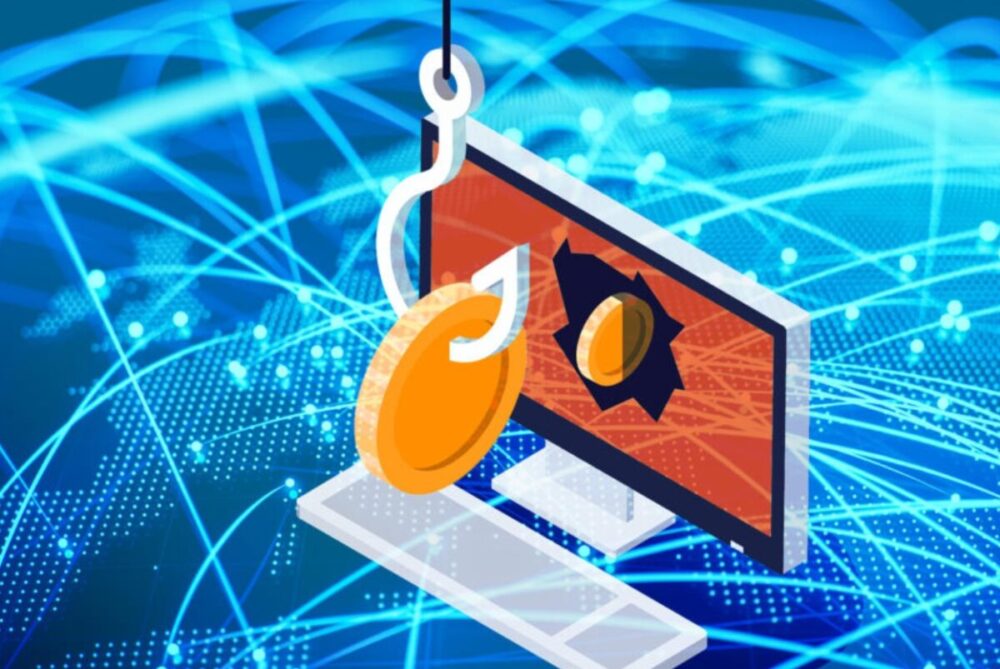Crypto-jacking. Have you heard of this technique, where hackers can use your computer or your device to mine crypto without you knowing about it? And sending it back to themselves? If you want to learn what this is, how to prevent it, and what you need to know, then continue reading our article, which can be very helpful when you’re getting into the world of cryptocurrency.
The world of finance can be debilitatingly painful to endure when you lose hard earned money. The exponential growth of the internet and its technologies have given a really high number of crevices and spaces for illegal activities to sprawl through.
Even though cyber authorities work hard every single day to find illegal activities on the internet and on other’s systems, it can be very hard to eliminate them all. This is why each owner of a system is given the opportunity and tools to keep themselves safe but can sometimes not understand how to use them.
Click here to know more about cryptocurrencies, their trading patterns and crypto-jacking. With all that being said, without further ado, let’s take a look at what cryptojacking is and how to avoid it on your system.

What Is Cryptojacking?
So what is crypto-jacking? This is the unauthorized use of your device, or other people’s devices, to mine cryptocurrencies. This is the favorite way for cybercriminals to mine and get their hands on coins if they don’t want to sign up their mining rigs and mine them legitimately.
Malware is used and designed to be imperceptible, so you can’t notice it, and hence it only uses a few of your device’s resources so they can ideally exploit your device’s resources to mine coins for them for a long time before you catch it if you ever catch it.

How Does It Work?
So how does this work? There are two main ways for them to do this, depending on how the malware is designed. First, they can do so by sending a link to your email or text message, and then when you click on it, they download a mining script onto your device. It runs in the background and mines crypto using your CPU or GPU.
For example, and sends it back to the hackers address that they control. Number two is a little bit more common than web-based crypto-jacking. This one, they inject scripts into websites that they’ve taken over or exploited or online ads. So when people visit these sites, the script executes automatically without being downloaded to your computer or mobile phone.
As you can imagine, this is less aggressive because you’re only mining for them as long as you’re on the compromised site.

Common Cryptos Involved With Cryptojacking
So which coins are commonly involved with crypto-jacking? Any proof-of-work point requires you to solve these proof-of-work puzzles constantly and mine for them, for say so Bitcoin, litecoin, Manero for example, but they prefer ones obviously that are easy to mine that you can do so with CPUs and GPUs.
This is why Manero or XM is super popular for crypto hackers and is also untraceable, so that’s a bonus for them. It’s harder for them to get caught by the authorities if they mine and take it in Manero form. Now how does this compare to ransomware because? We’ve heard of ransomware with cryptocurrency attacks – they both give the hacker financial gain.
Still, ransomware is much more noticeable because it locks you out of your computer, and you can’t access it unless you send them Bitcoin to their address. Crypto-jacking, on the other hand, may go undetected for quite a while.
Also, crypto-jacking is less risky because you can exploit a little bit on each device, but do it at a massive scale like millions of visitors or millions of effective devices instead of just ransom wearing like ten people.
So with ransomware, you also have much more contact between the attacker and the victim, which is risky if the hacker isn’t careful when they leave some identifiable information for the authorities to catch them with later.

Detecting Cryptojacking On Your System
So how to detect crypto-jacking on your device or when you’re visiting websites? Well, do you notice a decrease in performance or maybe a lack in execution? That may be a sign. Also, stay updated about the latest crypto-jacking news if new techniques pop up so that you know what to look out for.
Keep an eye out for your device overheating if you have a CPU usage monitor that may be helpful as you visit different websites. Also, just utilize antivirus and anti-malware software. Those are helpful to catch some of these as well.
4 Ways To Prevent Crypto Jacking
Now that you know how to detect crypto-jacking, here are the five tips that you can use to prevent or avoid cryptojacking on your device.

-
Awareness
Be aware of how it works—reading online articles such as this one is beneficial to figure out if there’s something wrong with your system. There are various technical blogs similar to this one that will widely help you understand how to diagnose your system and look for any signs of defectiveness that could indicate cryptojacking.
-
Extensions
Install extensions and tools that block various other harmful extensions on your browser like minor blocks, no coin, and so forth. Most cryptojacking is offered to you as helpful extensions for your browser.
Before you install them, make sure they’re adequately scanned for signs of any viruses or phishing links. Moreover, you can directly install software that blocks extensions being offered from unknown websites.
-
Better Browsers
A lot of these cryptojacking processes start as what looks like harmless ads. Please don’t fall for them. If you don’t trust yourself to make the right decision, download a good browser with an ad-block feature like Brave browser.
-
Antiviruses
Saving the best for the last, they are the antiviruses. These are essential software that is highly needed to make constant checks on your system. Most crypto hacking software are malware and viruses in the form of trojans. Stay vigilant. Update your antivirus if you haven’t already.





